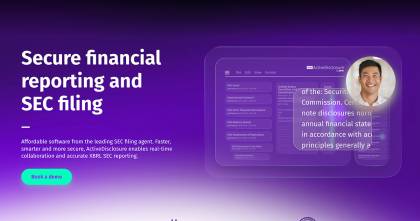Reverse mergers offer a range of advantages — both for shell companies seeking a private acquisition and for private companies looking to enter public markets without undergoing a traditional IPO. Because reverse mergers frequently involve shell companies, they trigger specific SEC disclosure requirements and often attract heightened regulatory scrutiny. This guide will help you understand what a reverse merger entails and what to expect from the process.
What is a Reverse Merger?
A reverse merger provides an alternative path for taking a company public. In a traditional IPO, a company must secure underwriting, prepare extensive disclosures, and raise capital through public share sales. This process is time-consuming and resource-intensive. A reverse merger streamlines this process by allowing a private company to merge with an existing public company — often a shell company — with the goal of becoming public without the capital-raising and marketing steps of an IPO.
Typically, the private company acquires control of a public shell company by purchasing a majority of its shares. Shell companies are often inactive and hold minimal or no assets, which can lower the cost of acquisition. Once acquired, the shell and private company merge to form a publicly traded entity. In some structures, the private company may create a subsidiary that merges with the public shell, resulting in a reverse triangular merger.
Because reverse mergers do not typically involve raising capital, they tend to suit companies that are not immediately dependent on public financing. When executed properly, a reverse merger can be completed in a matter of weeks.
What is a Shell Company in the Eyes of the SEC?
Shell companies are generally defined as entities with nominal operations and assets. Under Rule 405 of the Securities Act and SEC Rule 12b of the Securities Exchange Act of 1934, a shell company has no or nominal operations and either no or nominal assets, or only cash or cash equivalents.
There are several types of shell companies with distinct purposes. A special purpose acquisition company (SPAC) is a form of shell company specifically created to acquire an operating business and take it public (often referred to as a “blank check company”). In contrast, Form 10 shell companies may be subject to more extensive reporting requirements, which can increase the complexity of a reverse merger.
When comparing a SPAC vs. IPO, the structure and disclosure timeline differ significantly. SPACs raise capital before identifying an acquisition target, while traditional IPOs raise capital concurrent with the operating company going public. Form 10 shells, by contrast, are often used for alternative public transactions and restructuring initiatives.
SEC Disclosure Rules for Shell Companies
Because reverse mergers can occur on a shorter timeline than traditional IPOs, the SEC has implemented specific disclosure requirements to protect investors and ensure transparency. Key regulations include Rule 14a, Regulation S-X, and Regulation S-K. Rule 14a governs proxy solicitation and shareholder communications. Regulation S-X outlines requirements for financial statements, while Regulation S-K addresses non-financial disclosure obligations.
Required filings may include:
- A Form S-4 to register securities issued in the merger
- A proxy statement to notify shareholders of the transaction and solicit approval
- Form 10 disclosures for companies transitioning to fully reporting status, including audited financials, management discussion, and risk factors
- A Form 8-K filing, often referred to as a “Super 8-K,” filed within four business days of the closing, which must include extensive post-merger disclosures
Although the reverse merger structure is more expedient than an IPO, all required filings must be prepared and filed timely to comply with SEC rules.
Risks and Regulatory Scrutiny of Reverse Mergers
While reverse mergers can be efficient, they also draw intense SEC scrutiny. The SEC is aware that some reverse mergers have been used by shell company shareholders to sell shares quickly after closing, often at inflated valuations, which has raised concerns about transparency and investor protection.
Given the abbreviated due diligence period, both parties must be diligent in evaluating the transaction’s viability. Accurate reporting, strong corporate governance, and clear business purpose are essential to a successful merger. In 2011, the SEC tightened listing standards for reverse merger companies, particularly those with foreign ownership. These companies are now required to file periodic reports and trade in the U.S. for at least one year before applying to list on national exchanges, and must meet minimum bid price and liquidity thresholds.
Best Practices for Reverse Merger Disclosures
To increase the likelihood of success and reduce compliance risks, companies should consider the following best practices:
- Engage legal and financial advisors early in the process
- Validate that the private company’s financials are GAAP-compliant and auditable
- Establish a disclosure committee to oversee preparation of filings
- Maintain clear and consistent communication with shareholders
- Begin preparing SEC Form 10 and other disclosures prior to closing
Early preparation can minimize delays and reduce the likelihood of SEC objections.
DFIN Services to Smooth the Reverse Merger Process
While reverse mergers may offer a faster route to becoming public, they still demand careful execution and accurate reporting. DFIN supports companies through every stage of the process with technology and expertise tailored to complex transactional environments.
Our virtual data rooms, SEC filing software, and M&A solutions simplify the work of sharing information in a secure environment, filing documents, and completing mergers. Our expertise in handling Super 8-K filings, iXBRL-tagged content, and financial disclosures can help you achieve compliance from the initial due diligence to compliant SEC filings as a combined company. Contact us to discover our tools or learn more about how you can streamline your next reverse merger.


